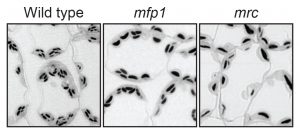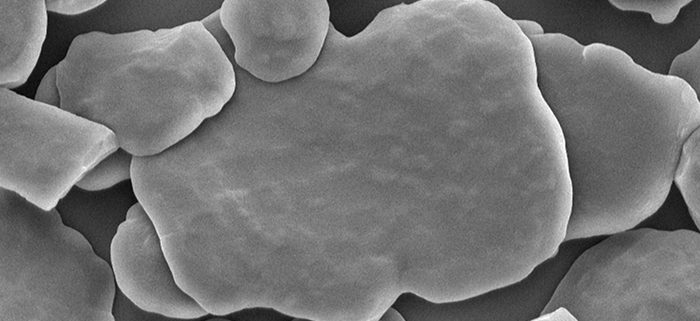Understanding Starch Granule Initiation
Seung et al. identify two plastidial coiled-coil proteins that play an important role in initiating starch granules in Arabidopsis chloroplasts https://doi.org/10.1105/tpc.18.00219
By David Seung, Tina B. Schreier, , Simona Eicke and Samuel C. Zeeman.
Background: Starch is the major form of carbohydrate storage in plants and a vital source of calories in our diet. It is produced in leaves of most plants, where it is present in chloroplasts as insoluble granules composed of glucose polymers. Although we have a good understanding of how these polymers are made, we do not understand many aspects of starch granule formation. In particular, we do not yet understand how the synthesis of each starch granule begins (granule initiation), and what determines granule shape and size, and how many there are in each chloroplast.
Question: Last year, we reported in The Plant Cell the discovery of two proteins (PTST2 and PTST3) specifically involved in starch granule initiation. Arabidopsis mutants lacking these proteins produce normal amounts of starch but have fewer, larger granules in each chloroplast. In this article, we aimed to build on these findings by discovering more proteins involved in the process.

The mfp1 and mrc mutants have fewer starch granules (visible as dark staining bodies) per chloroplast than the wild type.
Findings: We identified two additional proteins, MFP1 and MRC, that are required for normal granule initiation in Arabidopsis. Arabidopsis mutants lacking either of these proteins have fewer granules per chloroplast than the wild type. We found these by looking for proteins that interact with PTST2 and PTST3. Both MFP1 and MRC are unusual in that they do not look like any of the other proteins known to participate in starch synthesis. They lack known enzymatic or carbohydrate-binding domains, but can form a special type of helical secondary structure (coiled coils), indicating that they might play more of a structural role. Indeed, we show that MFP1 controls the location of the PTST2 protein within the chloroplast. We think the location of these proteins determines where starch granules initiate and form.
Next steps: Now that we have identified many of the players involved in starch granule initiation, we need to understand the precise role of each protein and how they are controlled to determine the number and distribution of starch granules per chloroplast. We also need to investigate the roles of these proteins in the starch-rich storage organs of crop species (like grains and tubers).
David Seung, Tina B. Schreier, Léo Bürgy, Simona Eicke, Samuel C. Zeeman (2018). Two Plastidial Coiled-Coil Proteins Are Essential for Normal Starch Granule Initiation in Arabidopsis Plant Cell Jul 2018, 30 (7) 1523-1542; DOI: https://doi.org/10.1105/tpc.18.00219
Keywords: starch, carbohydrates, polymers, chloroplasts




